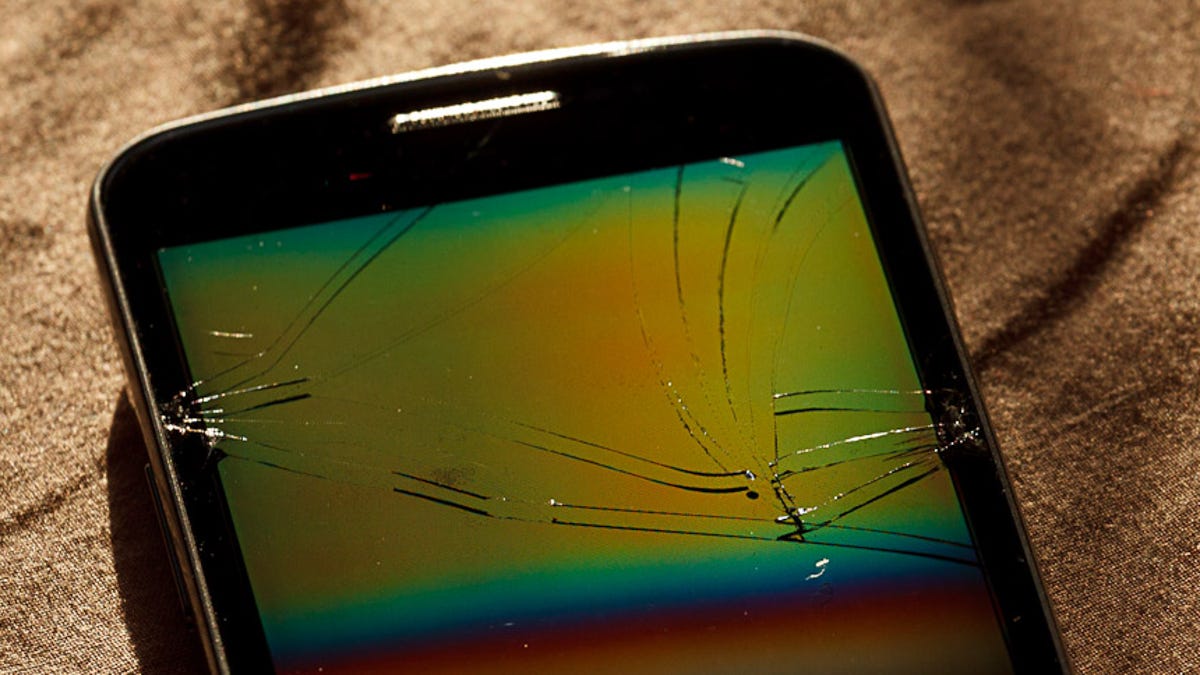Lesson from a cracked Galaxy Nexus: Get a phone case
The rich colors of my flagship Android phone are now viewed through a spiderweb of cracks. Should ruggedness be a feature, not an accessory?

I've long been a believer in cases to protect cell phones. Too bad I didn't practice what I preach.
I picked up a Galaxy Nexus at the end of December. Within a week, it leapt from my shirt pocket to a Linoleum floor by way of a porcelain sink edge. The result: the shiny new flagship Android now has a display with two shatter points and a spiderweb of cracks.
Happily, everything else about the phone still works, and the cracks are thin enough that the display is still easily used. Sometimes letters are malformed when I'm reading books, and sometimes the rough patches are distracting to the touch on the edges.
But it's definitely a problem that's impossible to ignore.
Compare that to my Nexus One that I've used for nearly two years. It's ensconced in an Otterbox Defender case. The case--a silicone wrapper with a hard plastic sheath for easy pocketing--is much the worse the wear. The first crack appeared in the plastic when I crashed on a downhill mountain bike ride in Chamonix, France, last summer.
Since then, the case cracks worsened, and now a chunk of the back and most of both sides are gone. The silicone wrapper is fine, though, and so is the phone.
It's not clear to me whether the Galaxy Nexus is particularly feeble. When I got it--a hand-me-down from CNET's reviews folks--it already had a very thin crack in the glass that was barely visible and that I couldn't feel at all. The screen certainly is large and the phone certainly is slim, both factors that would lead to a fragile screen.
Its Nexus S predecessor, another Samsung-built model with a curved screen, also hasn't impressed me. I like the curved screen for pocketability and for better matching the sweep of my thumb, but it didn't take too long before scratches started showing on it.
This is in stark contrast to the Gorilla Glass-protected iPhone 3G I owned earlier. I remember gradually realizing that it didn't matter a jot if I put it in the same pocket with my keys.
When my wife got her iPhone 4, I bought its version of the Otterbox Defender for her, too. Her coworkers hooted with derision for encumbering her sleek slab of electronics with a clunky case. But it's proved its worth, too, absorbing some abuse.
There's a cost to all this protection, I know. I found it too onerous for our iPad, which goes commando in its mostly home-based existence.
When it bounced off some floor tiles a few months ago, though, it acquired a nasty dent in one corner of its aluminum case. The glass screen pulled up a bit, but everything works fine. I had tried an Otterbox case for it, too--but it was just way too bulky. Perhaps a simpler sleeve would suffice, but for now, I just slip it into a padded envelope when I travel and try to keep it away from anything too hard.
And you can go too far. G-Form's waffle iron of an iPhone case looks to me like overkill for the average person.
I've eagerly watched the trend toward shockproof, waterproof cameras. For portable devices, ruggedness should be a feature, not an accessory.
It's a tough balancing act, of course, since durability adds expense, weight, complexity, and bulk.
But for a modern smartphone that you carry everywhere for years--and paying handsomely for the privilege--I'd hope at least for something better than what the Galaxy Nexus has delivered.

